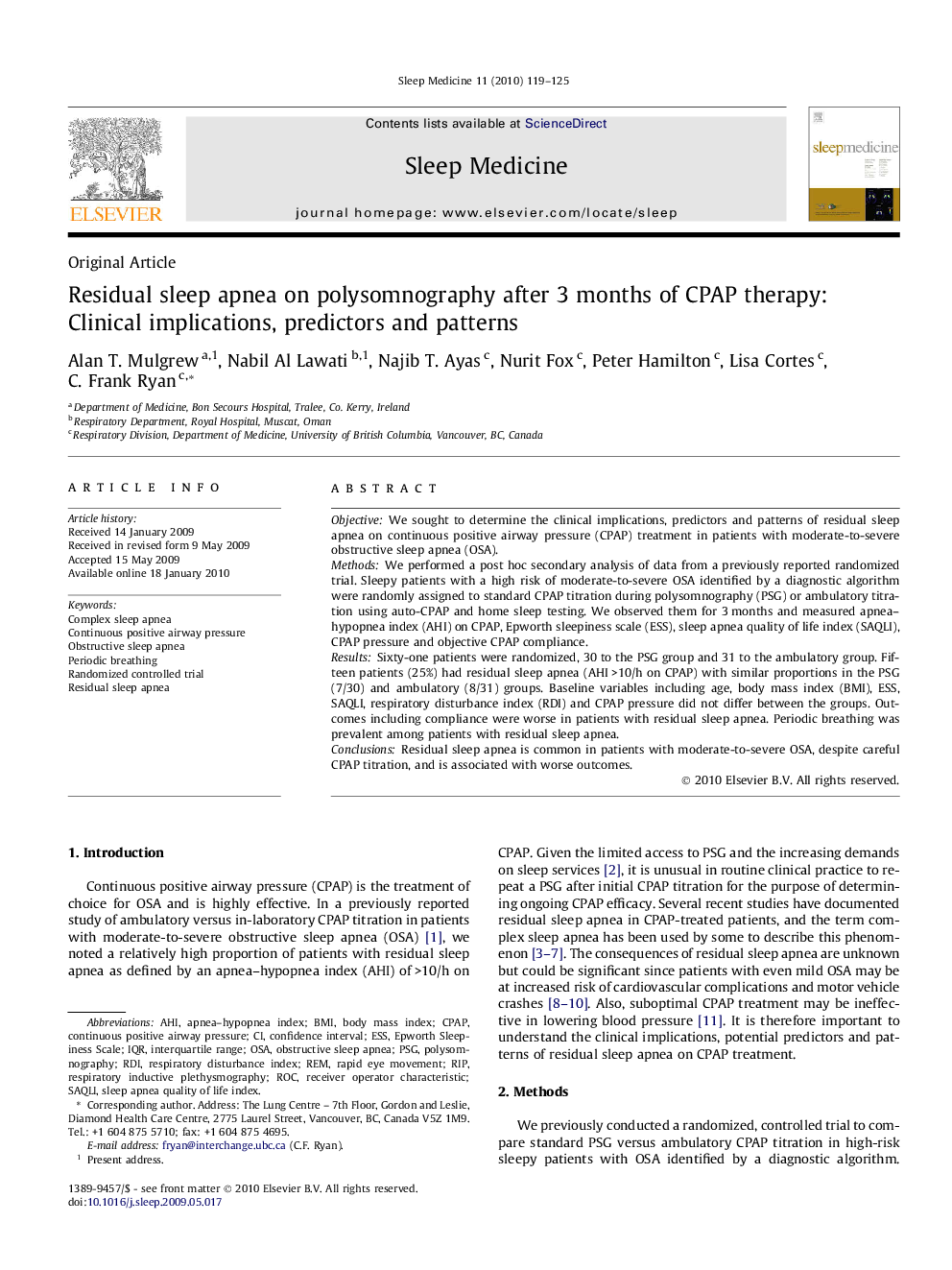| Article ID | Journal | Published Year | Pages | File Type |
|---|---|---|---|---|
| 3176466 | Sleep Medicine | 2010 | 7 Pages |
ObjectiveWe sought to determine the clinical implications, predictors and patterns of residual sleep apnea on continuous positive airway pressure (CPAP) treatment in patients with moderate-to-severe obstructive sleep apnea (OSA).MethodsWe performed a post hoc secondary analysis of data from a previously reported randomized trial. Sleepy patients with a high risk of moderate-to-severe OSA identified by a diagnostic algorithm were randomly assigned to standard CPAP titration during polysomnography (PSG) or ambulatory titration using auto-CPAP and home sleep testing. We observed them for 3 months and measured apnea–hypopnea index (AHI) on CPAP, Epworth sleepiness scale (ESS), sleep apnea quality of life index (SAQLI), CPAP pressure and objective CPAP compliance.ResultsSixty-one patients were randomized, 30 to the PSG group and 31 to the ambulatory group. Fifteen patients (25%) had residual sleep apnea (AHI >10/h on CPAP) with similar proportions in the PSG (7/30) and ambulatory (8/31) groups. Baseline variables including age, body mass index (BMI), ESS, SAQLI, respiratory disturbance index (RDI) and CPAP pressure did not differ between the groups. Outcomes including compliance were worse in patients with residual sleep apnea. Periodic breathing was prevalent among patients with residual sleep apnea.ConclusionsResidual sleep apnea is common in patients with moderate-to-severe OSA, despite careful CPAP titration, and is associated with worse outcomes.
